Transforming Learning, Deciding Where to Start: Practical Steps for Educational Leaders
Key Points
-
Reflection and analysis through meaningful dialogue within a team is the key to transformational success.
-
Defining and quantifying relational impact is an often overlooked component of driving change.

Navigating the landscape of educational transformation requires leaders to cultivate a reflective process and practice strategic decision-making. More than two decades ago, my involvement in a groundbreaking learning initiative in Alaska paved the way for a transformative approach to education, aligning with many of Deming’s quality management principles. We were working to create systemic approaches for personalized learning that would not be time-bound or driven by course requirements. This redesign prioritized equitable access for learners from very small and remote systems and created pathways to honor cultural differences and varied community values. This work predated Common Core and was in the early stages of what would become competency-based learning. Further details about this journey are detailed in the book Delivering on the Promise.
During these early years, we received training and support as we transformed schools and districts. I decided to reverse-engineer one of the tools from this training, creating a process that has been indispensable in my leadership journey. Although I made some tweaks, I often refer to it as the Interrelationship Diagram, its original name, because it is about causal relationships. The original intent was to provide a visual way to unravel complex problems by illustrating connections between factors. I still use this as a valuable way to dig into challenges related to adult collegiality and cultivating a learning culture. For additional information on the Interrelationship Diagram, organizations like ASQ (American Society for Quality) and David Langford’s Tool Time, have offered comprehensive insights and step-by-step guides for decades. HTH Graduate School of Education and Mind Tools does as well.
In my work with school leaders, we often need to assess organizational strengths and starting points. A modified Interrelationship Diagram solved this challenge. This visual aid, now known as the Focused Impact Tool (FIT), has become instrumental in efficiently directing organizational energy. Used as a collaborative process, it has proven to be an effective way to direct action in redesigning learning models, improving school cultures, and addressing learning transformation with school leaders.
The Focused Impact Tool is not just a diagram but a structured approach to unraveling the intricate web of relationships within educational systems. The process facilitates prioritizing issues, analyzing causal connections and offers a pathway for informed decision-making. Combined with effective facilitation, this tool harnesses rich dialogue among staff members, creating a conducive environment for collaboration and reflection.
Discussions within this context are crucial and necessitate sufficient time for collaboration. The duration, ranging from 15 to nearly 60 minutes, adapts to the tension around the topic and the team’s familiarity with the process. Acknowledging the challenges in managing these aspects, an external facilitator can prove beneficial. From my facilitation experience, instances where principals or district leaders actively participated reinforced the process for other staff. This approach also allowed them to distance themselves from topics of personal significance and engage as participants rather than leaders.
The ‘secret sauce’ of this process lies in valuable reflection and analysis through meaningful dialogue within a team. Effective and meaningful dialogue requires revisiting established group norms. For certain topics, specific protocols may be necessary to ensure all voices are heard and conflicts are navigated, especially if not explicitly addressed within the group norms.
The Focused Impact Tool Process
Step One: Identify Key Actions
Actions can be programs, protocols, or identified processes for an approach to help transform a learning organization.
Define the purpose. Some examples might be:
- Align the Learning Model to the Graduate Profile
- Activate personalized learning in a K12 system
Group Norms are established for collaboration.
Generate a list of the key areas/actions to meet the identified outcome. This list can be a result of brainstorming and mapping tools, or it may be a current list of actions already in place. If this topic is relatively new to the group, you may wish to consider brainstorming techniques. A mapping tool, such as an affinity diagram is a great way to solicit responses.
An example list:
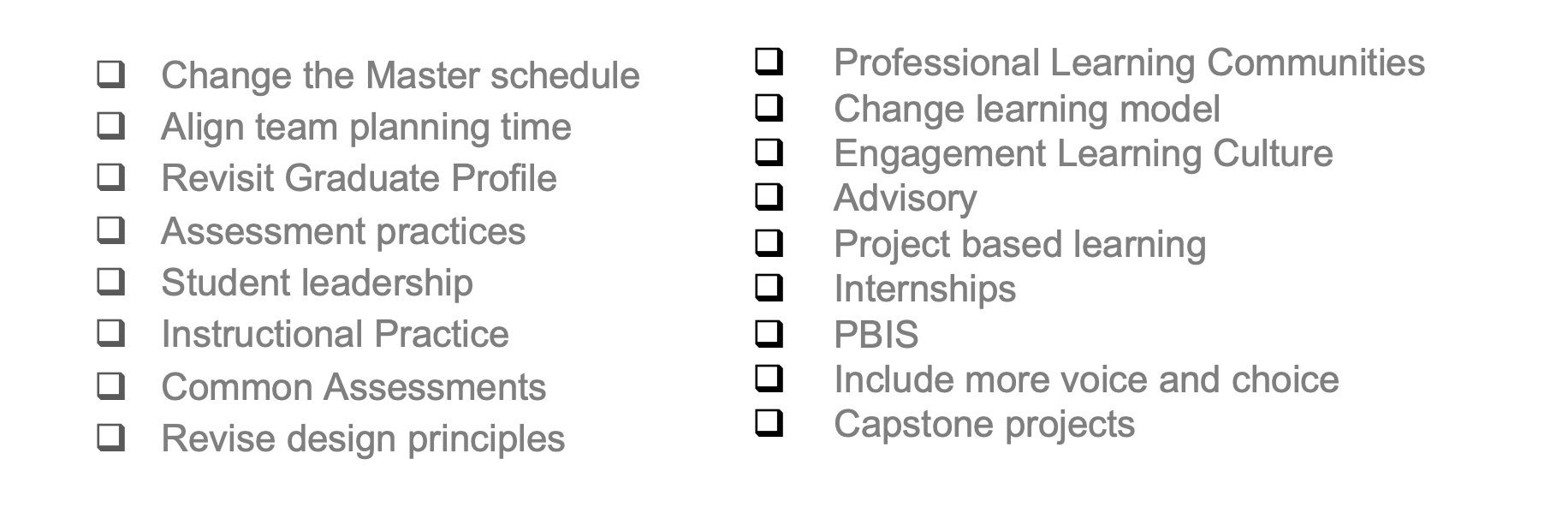
Step Two: Select Areas of Focus
The following steps can happen in reverse order if the group is struggling to consolidate or to agree on consolidation. The voting can then be used to assist with consolidation.
Consolidate similarities from the brainstormed list.
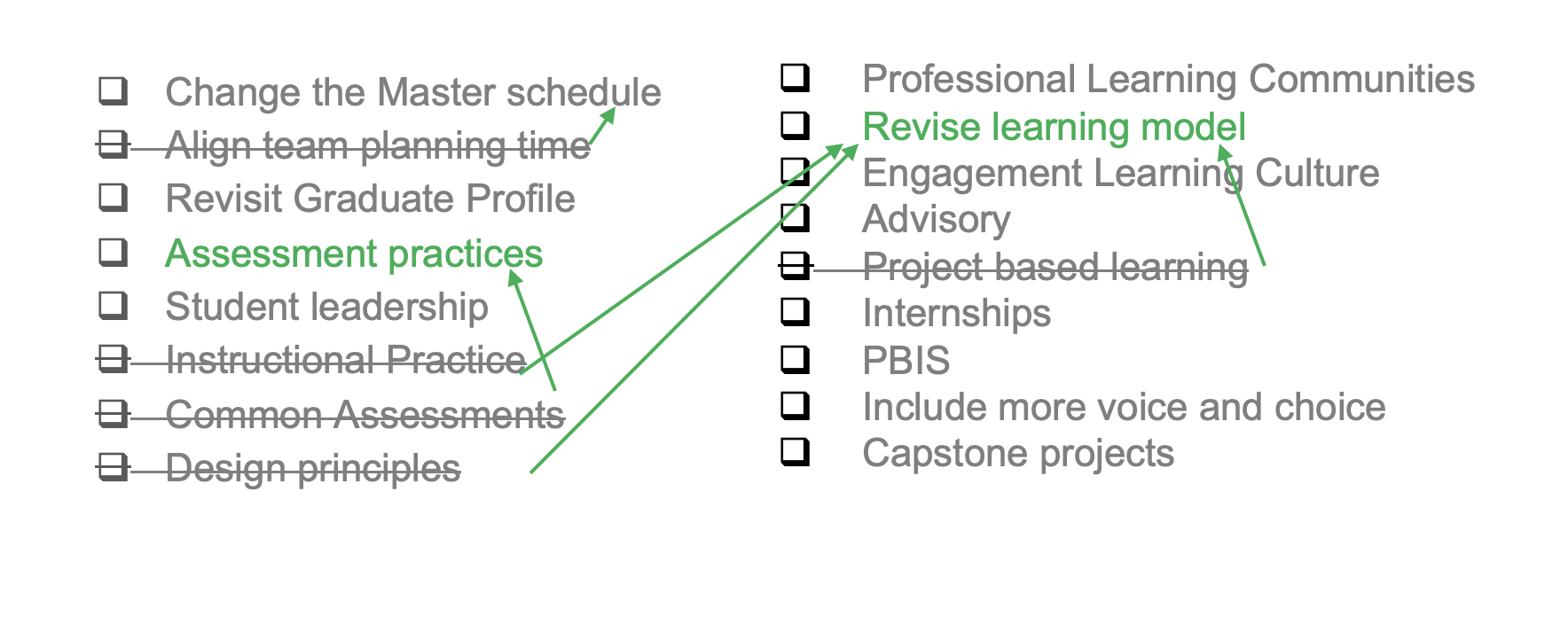
Prioritize. Select a power voting protocol. Options: Dot Voting, Nominal Group Technique (NGT),
Example:
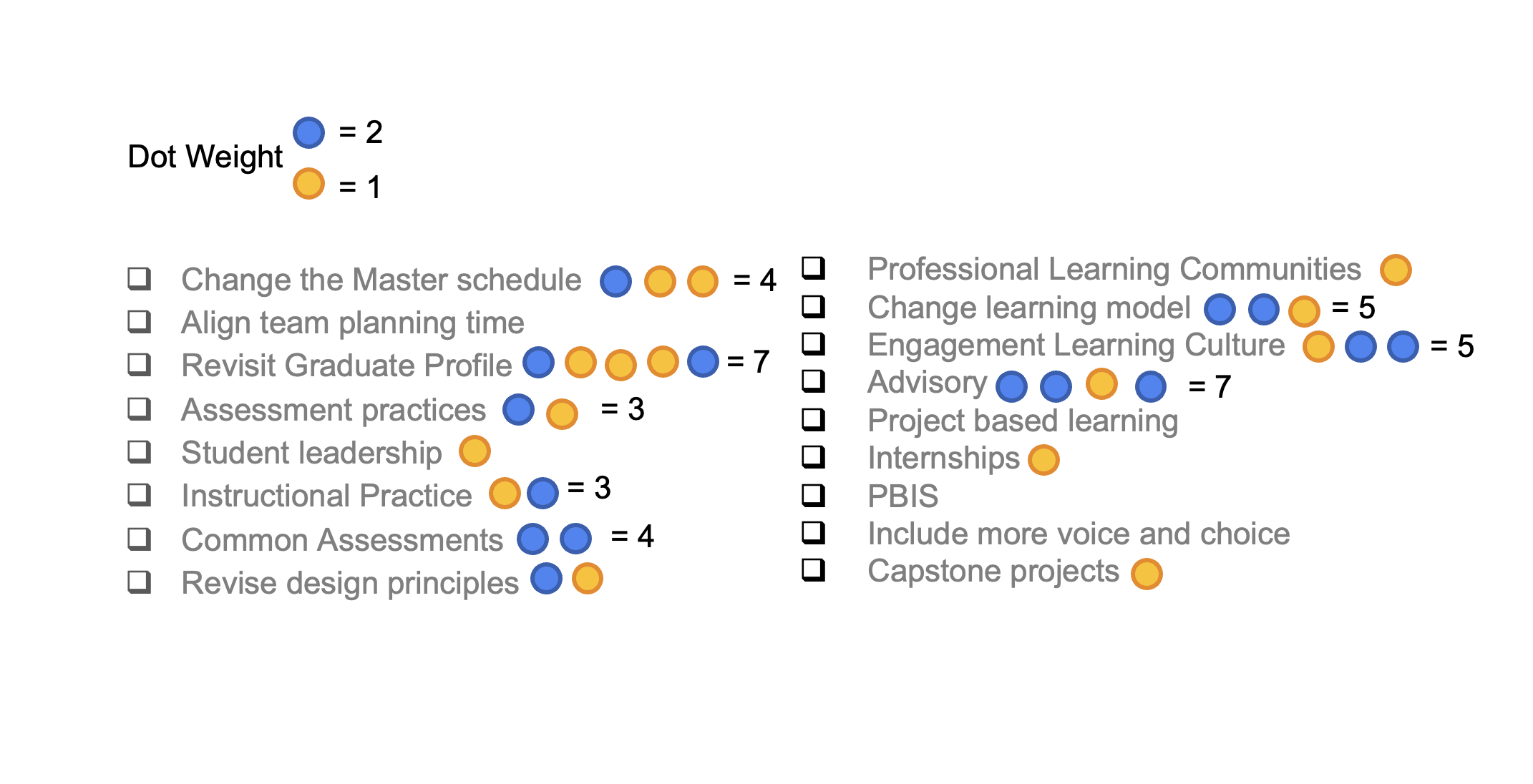
Step Three: Define Relational Impact
It is critical to revisit established group norms to ensure all voices are heard.
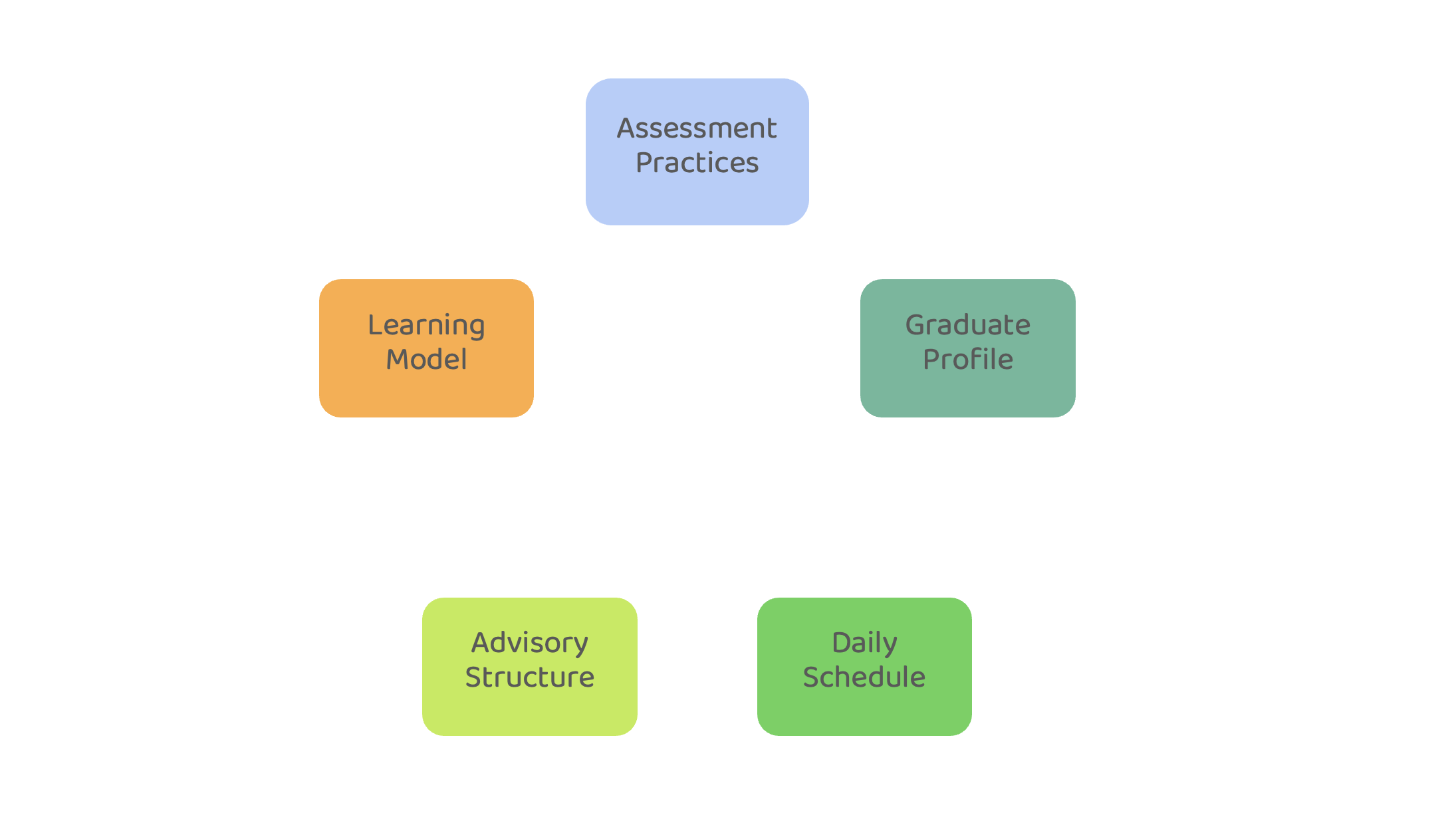
Draw the Diagram. Create a circular diagram with each key area represented as a category.
Determine the Impact of the Relationship. Use arrows to connect categories, visually representing the relationship between key areas to indicate directional impact. For each connected pair; determine which action, if performed first, would have the most significant impact on the other and then draw the arrow facing that direction.
For example, consider the scenario of revising a learning model and altering assessment practices. Which one would exert a greater impact on the other? While it might appear that the learning model would directly influence assessment, the reality is that learning organizations exhibit diverse levels of readiness for change and have strengths in various areas.
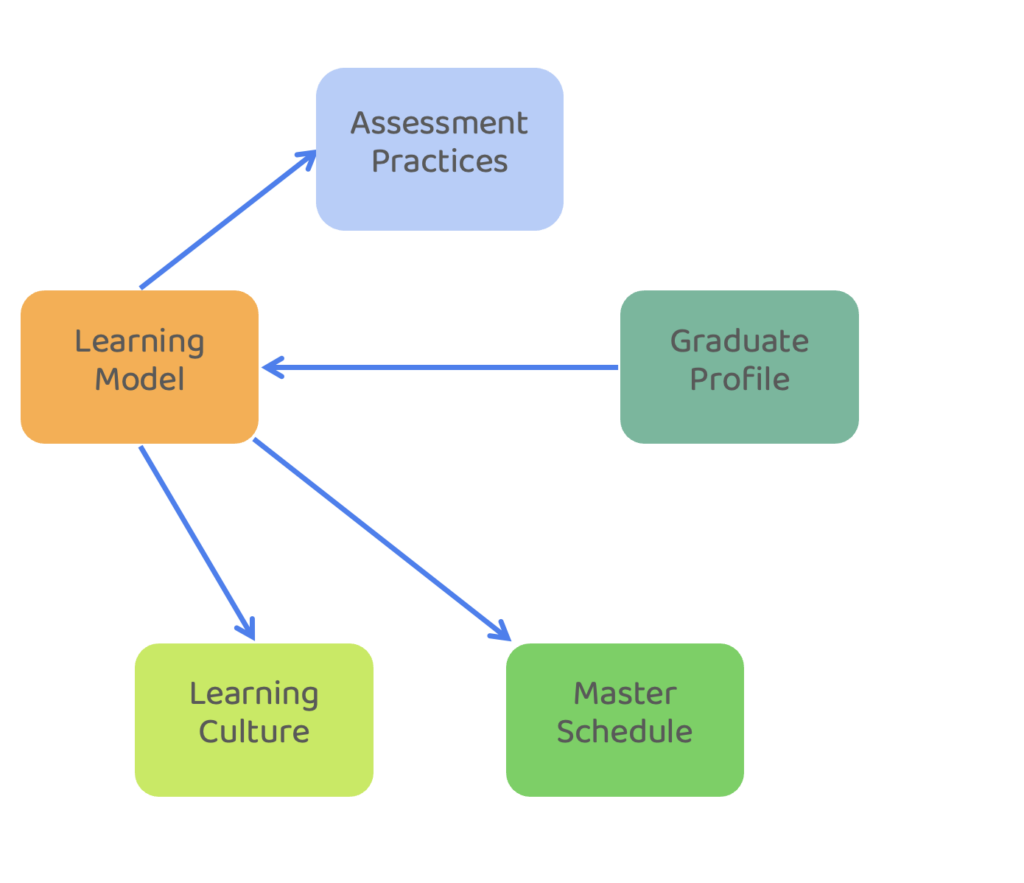
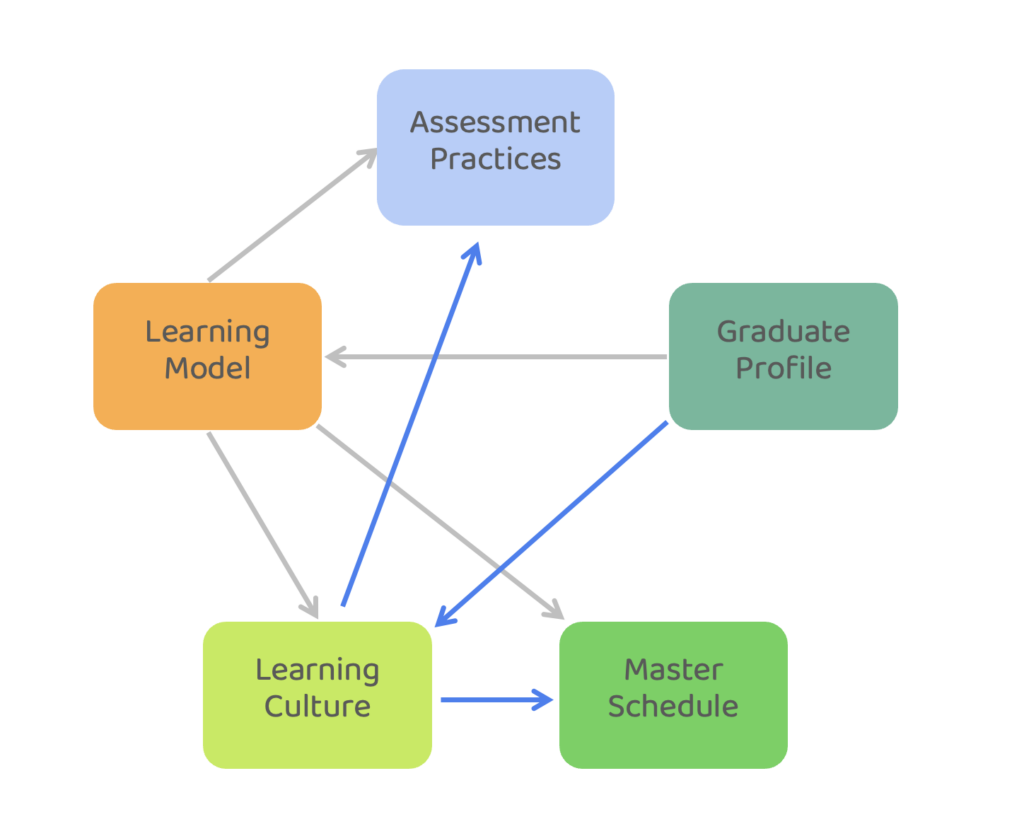
Step Four: Define Relational Impact
Teams or individuals strongly associated with an action that may not initially have the highest impact will understand that initiating work in this first area will eventually influence their primary focus. Additionally, other action items will become the subsequent goal for concentrated efforts sequentially.
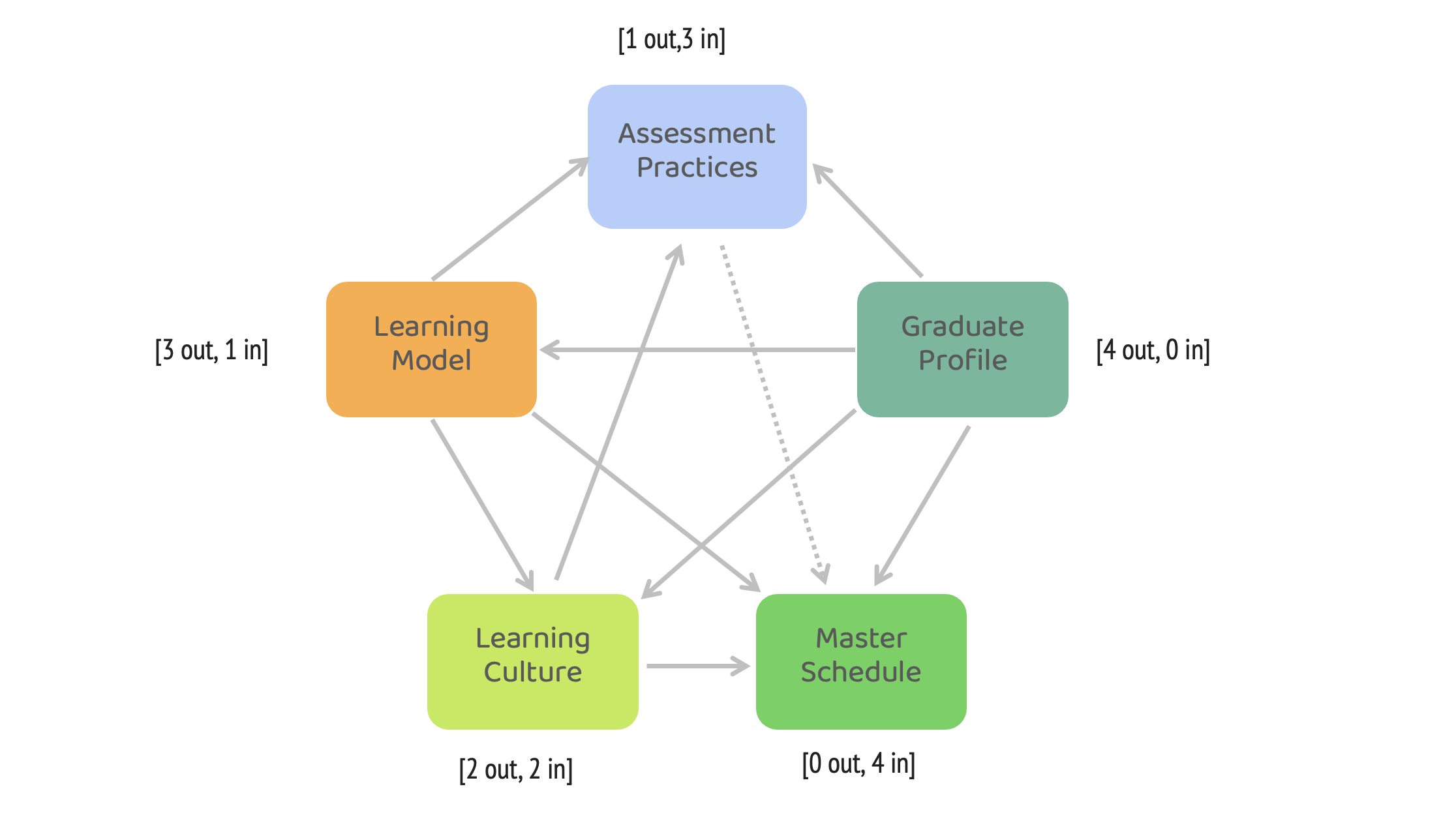
Quantify Relationships: Count the number of arrows going into and out of each key area. This quantification helps in identifying which areas have the most significant impact on others.
Identify and Prioritize the Action: Look for the category with the most arrows going out of it. This action has the most impact on the overall system.
Quantifying causal connections and prioritizing actions based on outcomes are essential parts of strategic planning. The Focused Impact Tool process, outlined in these stages, navigates key actions, and selection processes, and defines relational impacts. Informed by the analysis and results obtained through the process, a learning organization can strategically prioritize actions to maximize impact.



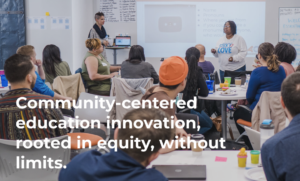
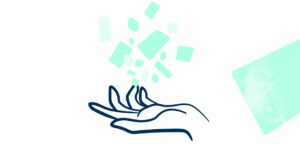
Chris Sturgis
This is an incredibly valuable article. Thank you so much for sharing your knowledge and offering the tools that make school change possible.
Mary K Holsclaw
Thank you for sharing your thoughts and providing these tools that will help change occur not at just a school level but at an organizational level. A great read that will be shared with my colleagues as we broach organizational change for schools.